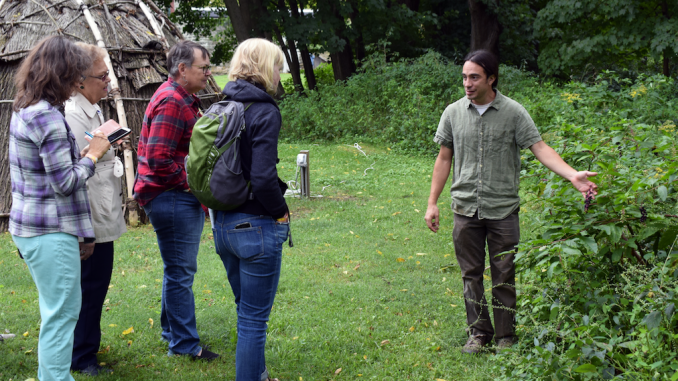
Historic Huguenot Street (HHS) is the center of New Paltz’s 300 year history. Through its dedicated staff, residents and tourists are able to explore the intricate details of the town, ranging from its culture to its art and to its people. This year, through the Thomas and Corinne Nyquist Foundation, HHS will be holding four seasonal nature walks, all led by local ethnobiologist Justin Wexler. These nature walks will provide the opportunity for people to not only learn about the local wildlife at different times of the year, but also learn about how the Esopus people lived on these lands during each season.
The Thomas and Corrinne Nyquist Foundation devoted to supporting non-profit organizations and programs in the New Paltz area. According to Kara Augustine, the Director of Public Programming for HHS, the Nyquist Foundation has assisted in several educational programs done by the organization, including providing funding for costumes for colonial events. The Nyquist foundation has once more decided to support HHS in their efforts to educate the community.
Wexler’s involvement in these four seasonal nature walks began when he was aproached by Augustine and was offered the position. After graduating from Bard College, Wexler founded Wild Hudson Valley, an organization committed to educating the public about the Hudson Valley, it’s flora and fauna and the people who once lived there.
“I was looking for a way to get the general public into the outdoors in the Hudson Valley watershed,” Wexler said. “There isn’t really anyone who’s teaching about local Indigenous peoples and how they lived off the land before Europeans.”
Indeed, these nature walks will go in depth on how Native Americans lived in the area.
“I’ll be leading people to different habitats through each walk,” Wexler said. “What I will be doing is pinpointing exactly what native people would be doing in that season.”
Wexler will also be pointing out what plants they used and where they lived, as well as any resident animals. In order to prepare for each walk, Wexler surveys the area beforehand, making notes of any points of interest.
The walks will be held through the upcoming months, beginning at the DuBois Fort Visitor. The first one is “The Midwinter Hunt: Bears, Stars, and Snow” held on Feb. 9, followed by “The Springtime Fishing Camps: Shad, Birds, and Flowers” held on May 11, then “Summers of Growth: Fruits, Greens, and Sun” on Aug. 10 and finally “The Autumn Harvest: Maize, Nuts, and Venison” on Nov. 9. The walks will begin at 11 a.m. and end around 12:30 p.m.
Augustine expressed the importance of hosting walks like these. “The programming that we’re doing on the Esopus-Munsee people is very important to Huguenot street,” she said. “It’s been a major focus on our interpretations [of history] of the past few years and we’ve been working to improve on [these] interpretations. We are incorporating their histories and stories through this programming.”
HHS will be hosting other events in the coming months, such as “Three Years Inside the Redoubt: Excavations on Huguenot Street, 2016-2018,” with guest lecturer Dr. Joseph Diamond at Deyo Hall at 6 Broadhead Ave. on March 2, discussing the recent excavations on Huguenot Street. After that, they will be hosting “Dressing in the 17th Century,” a discussion on colonial clothing featuring guest lecturer Tara Mancini at Deyo Hall at 6 Broadhead Ave. on March 21.
